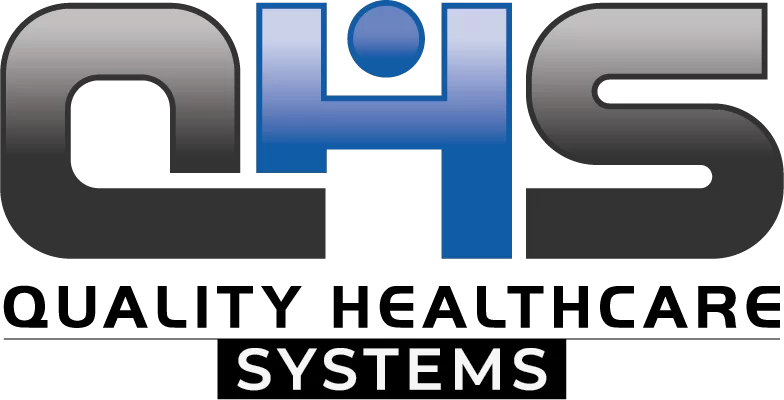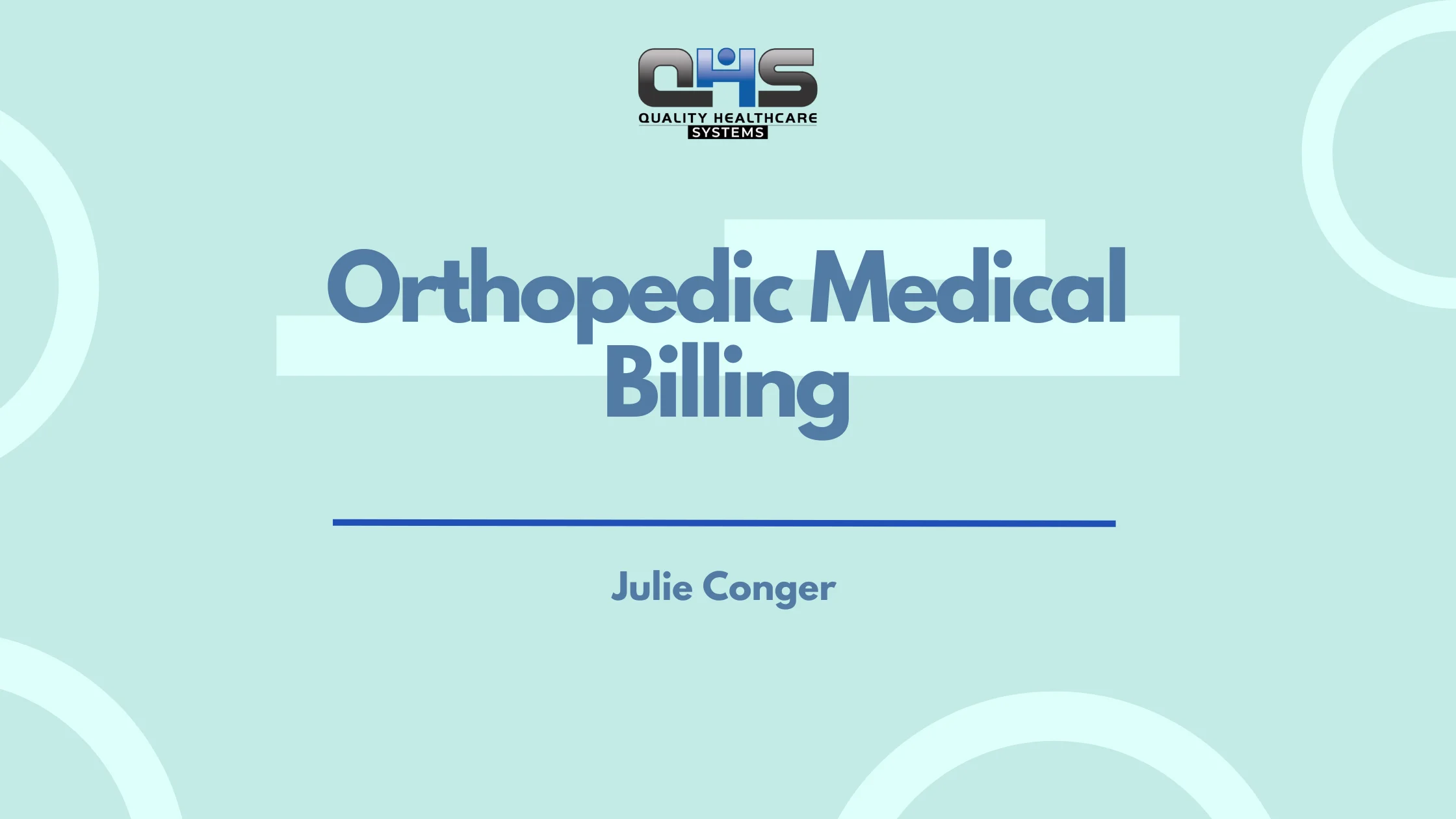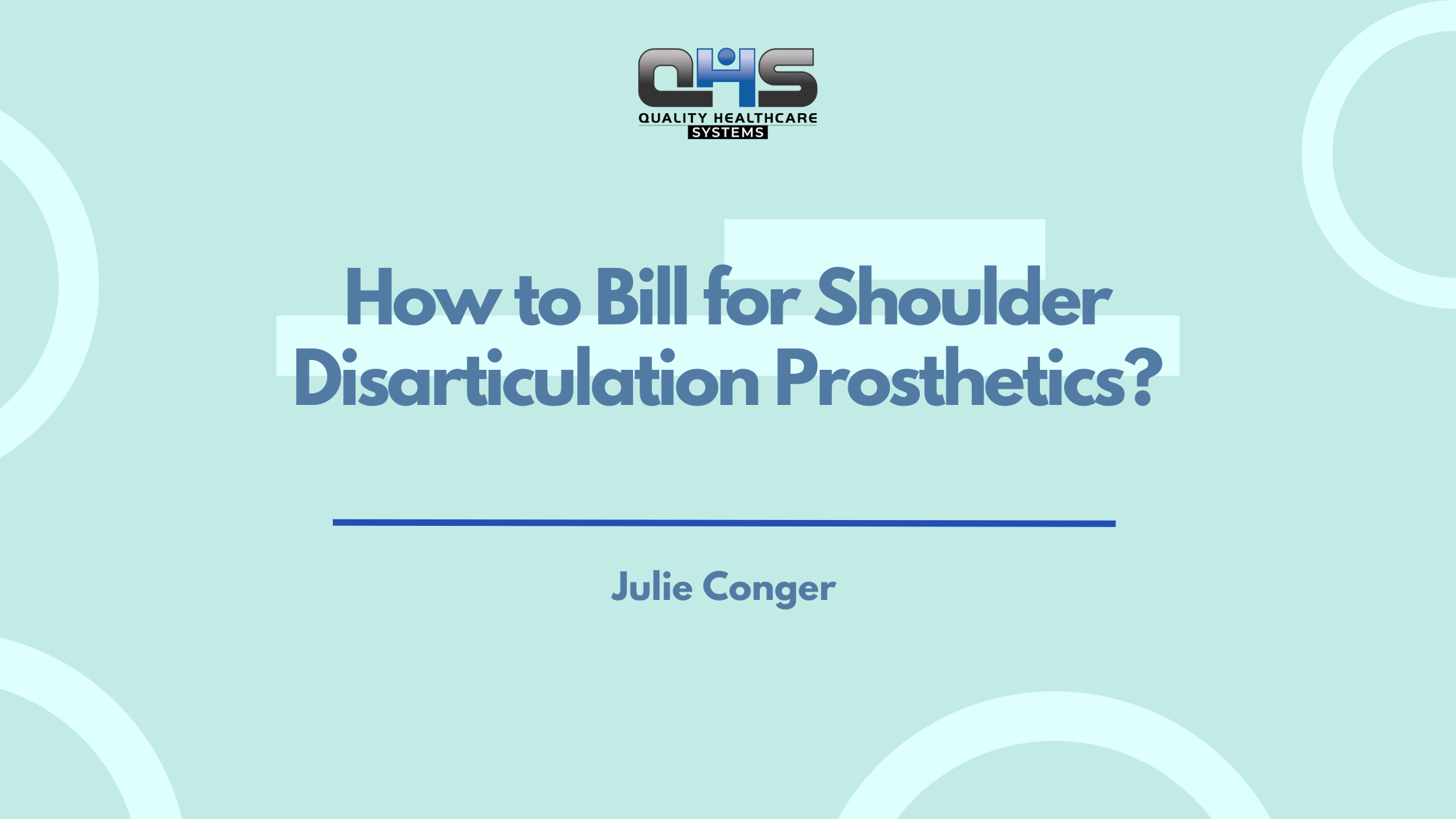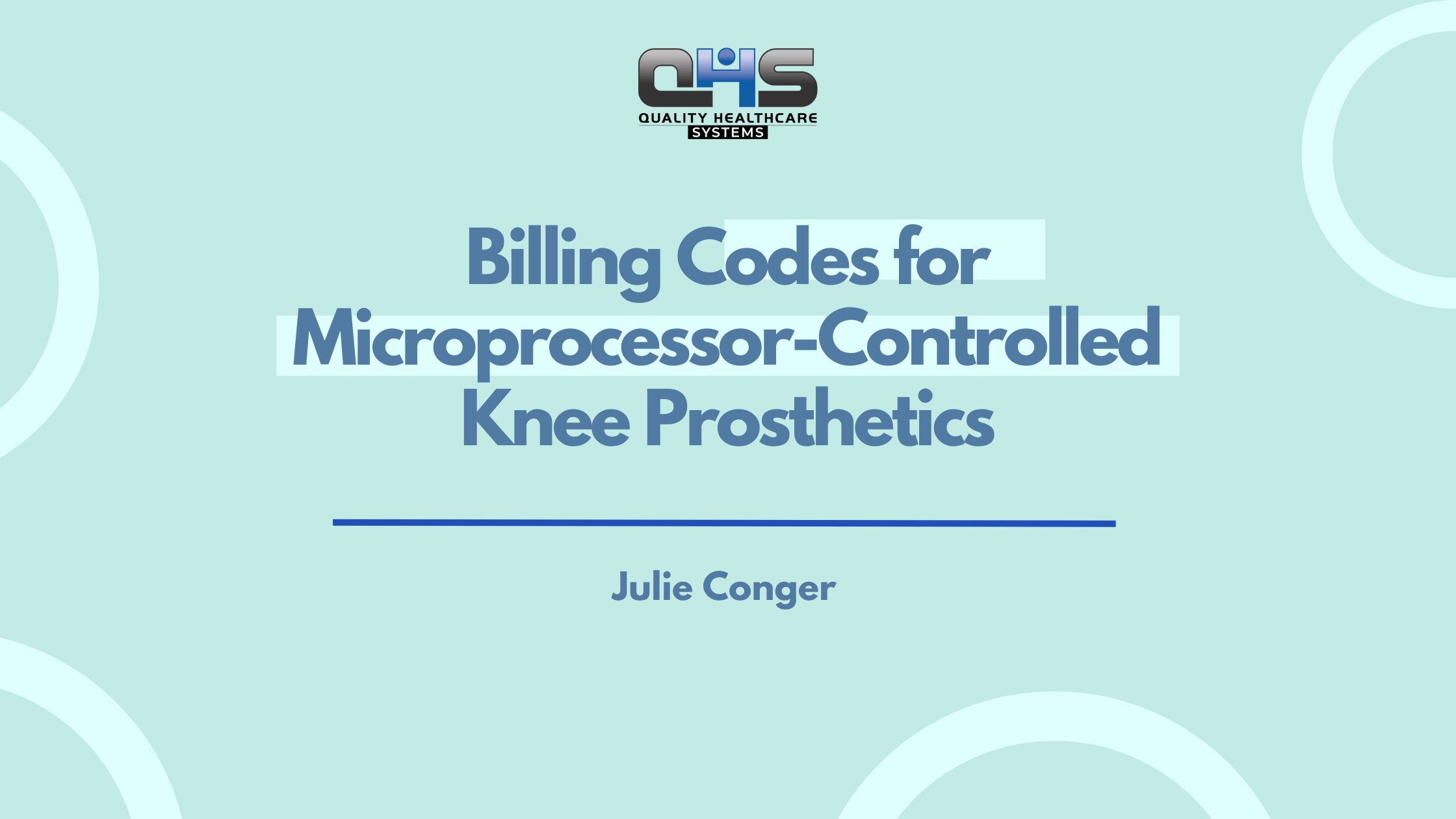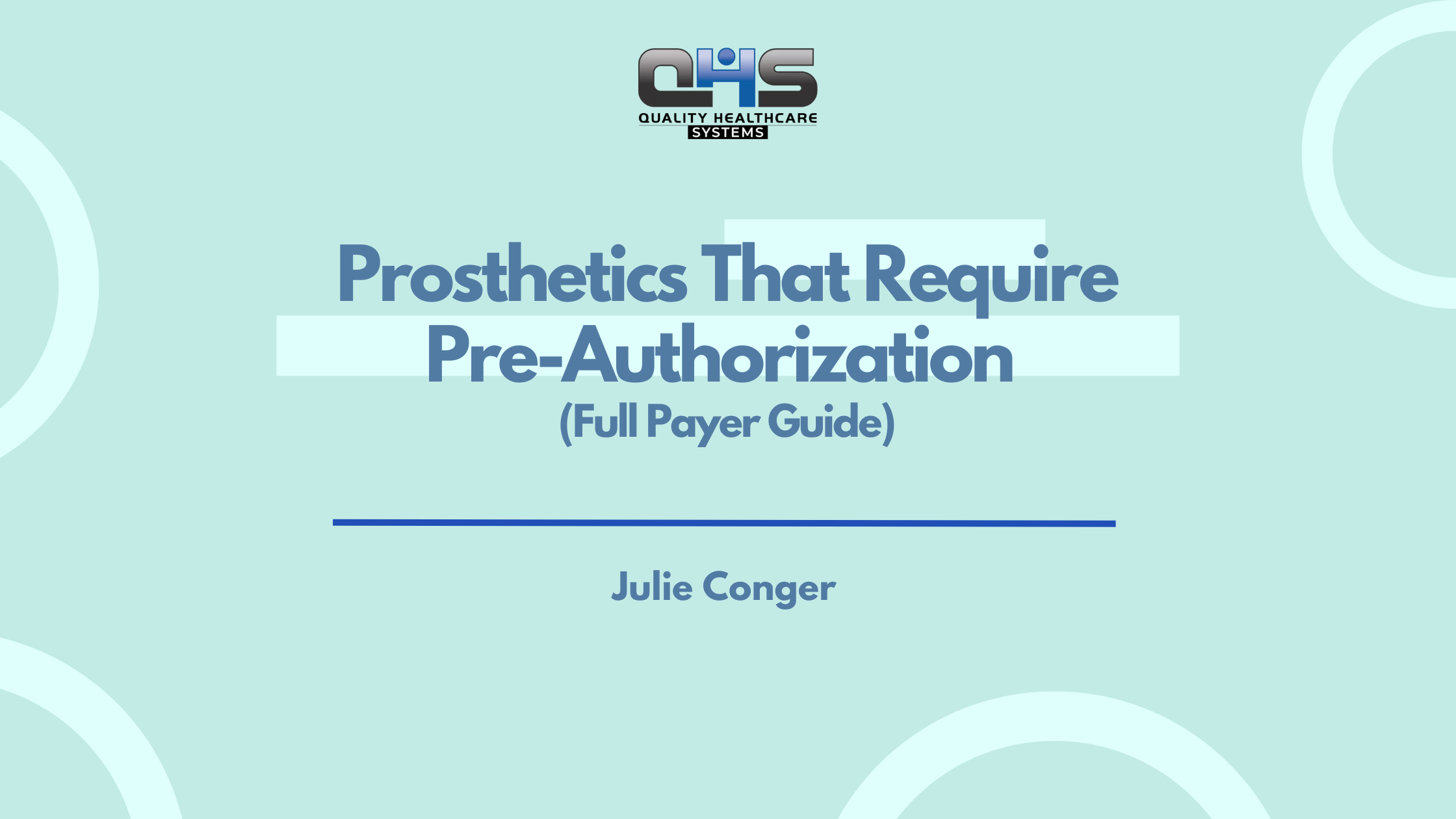Orthopedic medical billing requires precise coding, accurate documentation, and compliance with insurance rules to avoid claim denials. Errors in modifiers or missing details can delay payments.
This guide will break down the orthopedic billing process, covering best practices for revenue cycle management, coding strategies, denial prevention, how QHS can provide you the best Orthopedic billing services, and the role of automation in improving accuracy and efficiency.
What is Orthopedic Medical Billing?
Orthopedic medical billing involves coding, documentation, and claim submission for procedures like joint replacements, fracture treatments, and spinal surgeries. Accurate coding ensures compliance with payer guidelines, preventing denials and optimizing reimbursements.
Effective orthopedic billing requires proper modifier use, thorough documentation, and adherence to evolving Medicare and private insurer policies. Automation and denial management improve accuracy, streamline workflows, and enhance financial stability for orthopedic practices.
Key Steps in the Orthopedic Medical Billing Process
A well-structured orthopedic medical billing process ensures accurate reimbursements while maintaining compliance with insurance regulations. Below are the essential steps for optimizing revenue cycle management in orthopedic practices.
1. Patient Registration and Insurance Verification
Accurate patient data is essential for orthopedic medical billing. Verifying insurance eligibility, coverage limits, co-pays, and prior authorizations ensures claims meet payer guidelines, reducing denials and accelerating reimbursements for orthopedic procedures.
2. Procedure Coding and Modifier Application
Orthopedic medical billing relies on precise CPT, ICD-10, and HCPCS coding. Proper modifier use, such as -LT, -RT, and -59, differentiates procedures, preventing bundling errors and ensuring maximum reimbursement for complex orthopedic treatments.
3. Claims Submission and Compliance Review
A critical step in orthopedic medical billing is submitting clean claims. Compliance checks ensure accurate documentation, medical necessity, and payer-specific rules. Electronic submissions improve processing speed, reducing errors and claim rejections.
4. Denial Management and Payment Reconciliation
Denied claims in orthopedic medical billing must be reviewed for coding errors, missing documentation, or coverage issues. Efficient appeals and payment reconciliation help recover lost revenue and maintain financial stability for orthopedic practices.
CPT Codes for Orthopedic Medical Billing
Orthopedic medical billing utilizes a comprehensive set of Current Procedural Terminology (CPT) codes to accurately describe medical, surgical, and diagnostic services. Below is a detailed table categorizing common orthopedic procedures along with their corresponding CPT codes. This list is not exhaustive but includes frequently used codes in orthopedic practice.
| Procedure Category | Procedure Description | CPT Code(s) |
|---|---|---|
| Fracture Care & Trauma | Closed treatment of nasal bone fracture without manipulation | 21310 |
| Closed treatment of clavicular fracture without manipulation | 23500 | |
| Open treatment of clavicular fracture, with or without internal or external fixation | 23515 | |
| Open treatment of fracture great toe, phalanx or phalanges, includes internal fixation, when performed | 28505 | |
| Arthrocentesis, Aspiration, Injection | Aspiration and/or injection of small joint or bursa (e.g., fingers, toes) | 20600 |
| Aspiration and/or injection of intermediate joint or bursa (e.g., wrist, elbow, ankle, olecranon bursa) | 20605 | |
| Aspiration and/or injection of major joint or bursa (e.g., shoulder, hip, knee joint, subacromial bursa) without ultrasound guidance | 20610 | |
| Aspiration and/or injection of major joint or bursa with ultrasound guidance | 20611 | |
| Arthroscopic Procedures | Arthroscopy, knee, surgical, with meniscectomy (medial or lateral) | 29881 |
| Arthroscopy, knee, with debridement/shaving of articular cartilage | 29877 | |
| Arthroscopy, shoulder, with subacromial decompression | 29826 | |
| Joint Replacement & Reconstruction | Total hip replacement | 27130, 27134, 27137, 27138 |
| Total knee replacement | 27446, 27447, 27487 | |
| Total shoulder replacement | 23470, 23472, 23616 | |
| Tendon and Ligament Repair | Repair of ruptured biceps tendon | 24341 |
| Repair of flexor tendon in the hand | 25260 | |
| Repair of Achilles tendon | 27650 | |
| Spine Procedures | Anterior cervical discectomy and fusion (ACDF) | 22551 |
| Lumbar spinal fusion | 22612 | |
| Other Common Orthopedic Procedures | Injection(s), single tendon sheath (e.g., for tendonitis) | 20550 |
| Biopsy of muscle | 27310 | |
| Neuroplasty and/or transposition; median nerve at carpal tunnel | 64721 | |
| Durable Medical Equipment (DME) | Knee orthosis, adjustable knee joints (e.g., post-op knee brace) | L1833 |
| Lumbar-sacral orthosis (LSO) for back support | L0650 | |
| Wrist-hand orthosis (e.g., for carpal tunnel syndrome) | L3908 |
Note: This table includes commonly used CPT codes in orthopedic medical billing. For a comprehensive and up-to-date list, please refer to the latest CPT code manual or consult the American Medical Association (AMA) resources.
Read: Medical Billing Time Limits by State
Compliance & Regulations in Orthopedic Medical Billing
1. HIPAA Compliance for Orthopedic Billing
Orthopedic practices must protect patient data under HIPAA regulations. Billing teams must ensure secure electronic claims submission and safeguard protected health information (PHI) to avoid legal violations and penalties.
2. Medical Necessity & Documentation
Orthopedic procedures like joint replacements, spinal surgeries, and fracture treatments require clear documentation of medical necessity. Incomplete records can lead to claim denials, audits, and reimbursement delays.
3. ICD-10 & CPT Coding Accuracy
Orthopedic medical billing must follow precise ICD-10 and CPT coding for procedures like arthroscopies, tendon repairs, and orthopedic injections. Incorrect coding, such as upcoding or unbundling, can trigger payer audits and claim rejections.
4. Medicare & Private Payer Compliance
Orthopedic billing must align with Medicare’s National and Local Coverage Determinations (NCDs & LCDs) and private insurer policies. Failing to follow payer guidelines can result in denied claims and lost revenue.
5. Modifier Usage & Fraud Prevention
Orthopedic procedures often require modifiers (e.g., -LT, -RT, -59) to indicate laterality or separate procedures. Misuse can lead to compliance violations, fraud investigations, and financial penalties.
Read: Biggest Billing Mistakes That Cost DME Providers Thousands
Common Challenges & Their Solutions in Orthopedic Medical Billing
Orthopedic medical billing faces challenges like complex coding, high denial rates, and strict insurance policies. Accurate documentation, proper coding, and compliance with payer guidelines are essential for successful claim processing.
1. Coding Errors in Orthopedic Procedures
Incorrect coding for surgeries, joint replacements, and fracture treatments results in claim rejections. Using the wrong modifiers (-LT, -RT, -59) can also trigger denials.
✔ Solution: Train coders in orthopedic-specific billing, ensure accurate documentation, and conduct routine audits to catch errors before submission.
2. Frequent Claim Denials & Rejections
Insurance providers deny orthopedic claims due to insufficient documentation, lack of medical necessity, or missing pre-authorizations. These delays affect cash flow and patient care.
✔ Solution: Verify insurance requirements, document all procedures thoroughly, and implement a strong denial management system to resubmit claims quickly.
3. Delays in Pre-Authorizations
Many orthopedic procedures, such as MRIs and pain injections, require pre-authorization. Delays can disrupt patient treatment schedules and impact reimbursement.
✔ Solution: Dedicate a team to track pre-authorization requests, use automation tools, and follow up proactively to secure approvals faster.
4. Compliance Risks with Payer Policies
Medicare and private insurers have strict billing rules, and failing to comply with LCDs/NCDs can result in audits and payment holds.
✔ Solution: Stay updated on policy changes, invest in billing software that flags non-compliance, and conduct regular compliance training for staff.
Orthopedic Billing Revenue Cycle Management (RCM) Steps
| Step | Description | Importance |
|---|---|---|
| Patient Registration & Insurance Verification | Collect patient details and check eligibility | Prevents claim rejections due to coverage issues |
| Accurate Coding & Documentation | Use precise CPT, ICD-10, and HCPCS codes | Ensures compliance and maximizes reimbursements |
| Claims Submission | Submit clean claims with required documents | Reduces delays and denials |
| Denial Management | Analyze and correct rejected claims | Helps recover lost revenue efficiently |
| Payment Posting & Reconciliation | Verify payments and match with claims | Identifies underpayments and billing errors |
Top 6 Unexpected Orthopedic Billing Denials & How to Prevent Them
Orthopedic billing denials often stem from overlooked errors in documentation, coding, and payer policies. Identifying and addressing these issues helps practices reduce revenue loss. Here are six common yet unexpected denials and how to prevent them:
1. Orthopedic Billing Denial Due to Global Period Violation
Many orthopedic procedures, such as fracture care and joint surgeries, fall under a global period where follow-up visits are included in the initial reimbursement. Billing separately for related services within this period results in denials.
✔ Prevention: Track global periods using practice management software and append appropriate modifiers (e.g., -24 for unrelated E/M services).
2. Orthopedic Billing Denial for Missing Medical Necessity Documentation
Insurers frequently deny claims for orthopedic treatments like knee injections or spinal surgeries if the documentation does not justify the procedure. Incomplete medical history and lack of prior conservative treatments often trigger this denial.
✔ Prevention: Ensure all medical records include diagnosis details, prior treatment attempts, imaging reports, and physician notes supporting the necessity of the procedure.
3. Orthopedic Billing Denial Due to Incorrect Modifier Usage
Orthopedic procedures often require modifiers (e.g., -LT/-RT for laterality, -59 for distinct services). Using incorrect or missing modifiers leads to claim rejections.
✔ Prevention: Train billing staff on modifier guidelines, validate codes before submission, and conduct internal audits to catch modifier errors.
4. Orthopedic Billing Denial for Exceeding Frequency Limits
Certain orthopedic treatments, such as cortisone injections and physical therapy sessions, have payer-imposed frequency limitations. Submitting claims beyond the allowed number results in automatic denials.
✔ Prevention: Review payer policies, track treatment frequency, and ensure appeals include supporting documentation when medically necessary.
5. Orthopedic Billing Denial for Coordination of Benefits (COB) Issues
Orthopedic claims may be denied if the payer believes another insurance should be billed first. This happens when COB information is outdated or not verified before claim submission.
✔ Prevention: Verify patients’ insurance details at every visit, update COB information in the system, and resubmit claims promptly with corrected details.
6. Orthopedic Billing Denial Due to Bundling Errors
Many orthopedic procedures are bundled under Correct Coding Initiative (CCI) edits, meaning certain services cannot be billed separately. Billing bundled services incorrectly results in denials.
✔ Prevention: Use CCI edits to check for bundling rules, apply proper modifiers when allowed, and ensure coding compliance before submitting claims.
Preventing these denials improves claim approval rates, reduces revenue delays, and ensures seamless orthopedic medical billing operations.
Read: How to Appeal Denied Claims for Prosthetic Device Billing
Key Modifiers in Orthopedic Billing
| Modifier | Description | When to Use |
|---|---|---|
| -LT/-RT | Left or Right Side | For procedures on specific body parts |
| -59 | Distinct Procedural Service | When two services are performed separately |
| -24 | Unrelated E/M Service During Post-Op | For unrelated visits within the global period |
| -25 | Significant, Separately Identifiable E/M | When an E/M service is performed on the same day as a procedure |
| -50 | Bilateral Procedure | When the same procedure is performed on both sides of the body |
2. Common Reasons for Claim Denials & Their Solutions
Outsource to Quality Healthcare Systems (QHS) for Seamless Orthopedic Billing
Quality Healthcare Systems (QHS) ensures accurate orthopedic medical billing with expert coding, claim management, and compliance monitoring. Reduce denials, maximize reimbursements, and streamline operations with our specialized billing solutions tailored for orthopedic practices. Partner with QHS for hassle-free revenue cycle management.
